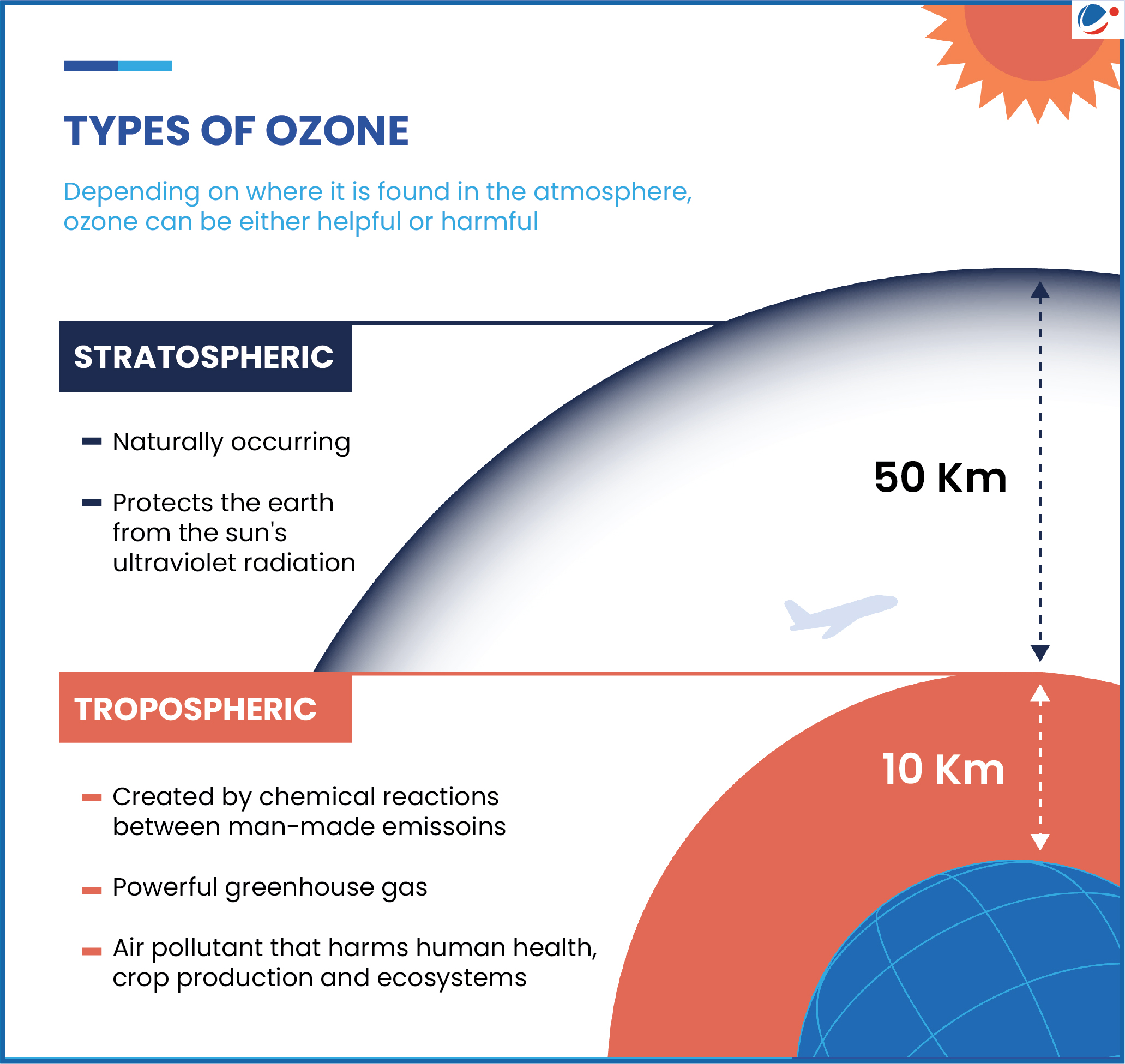Key findings on Ground-level Ozone (GLO)
- India’s 10 metropolitan areas have exceeded the national ozone standard, with Delhi being the most affected.
- GLO hotspots: Located in areas with low levels of NO2 and PM2.5 as unavailability of NO2 hampers its dissipation.
- Night-time GLO continues to persist in all metropolitan areas.

Ground-level Ozone (GLO)
- Ozone (O3) is a variant of oxygen composed of three oxygen atoms.
- It occurs both in the Earth’s upper atmosphere and at ground level/ Tropospheric Ozone (See Image).
- GLO is a secondary, short-lived pollutant formed in the atmosphere by reaction between oxides of nitrogen and volatile organic compounds (VOCs) in the presence of sunlight.
- Peak O3 levels occur in summers.
- Source: Pollution from cars, power plants, industries; electronic equipment, e.g., photocopiers.
Impact of Ground-level Ozone (GLO)
- Health: Worsen bronchitis, trigger asthma, and permanently damage lung tissue.
- Climate: Absorbs radiation and consequently acts as a strong greenhouse gas.
- Agriculture and Ecosystem Impacts: Interferes with photosynthesis and stunts overall growth of some plant species.
Strategies to prevent Ozone pollution: Methane reductions and cutting the levels of atmospheric pollution arising from cars, power plants and other sources.




